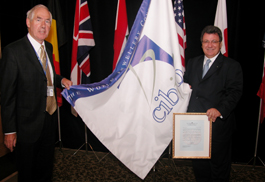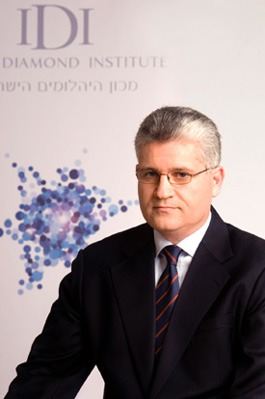High-strength alloys breathing new life into 24K jewellery
There exists in the market strong demand for 24K gold jewellery, because of precious metal’s beautiful warm colour and high purity. This is especially the case in the Far East.
From a goldsmith’s perspective, high-karat gold is very ductile and easy to work with. The downside is that it tends to be soft, so 24K jewellery is generally heavier and more prone to distortion, scratching and wear and tear. In contrast, middle and low-karat gold jewellery is stronger and harder, and also is less expensive.
Given the demand, however, it would undoubtedly be desirable to be able to obtain stronger 24K and other high-karat gold alloys, with properties approaching those of 18K gold. This would enable lighter, more elegant designs to be produced that would wear less in service.
The good news is that several hallmarkable high strength 24K gold alloys, and some 22K golds too, have been developed in recent years. Some are commercially available but the uptake in the Western jewellery market has been disappointing to say the least.
Is it just a question of them being too expensive? Or they are not easily available? Or is it that they are not easy to work with, making it difficult to fabricate jewellery in these materials?
The first development in the 1980s was ‘990’ gold – a gold of 990 fineness alloyed with 1 percent of titanium and with considerably enhanced strength and hardness. However, its production requires sophisticated vacuum melting and processing facilities and scrap cannot be simply remelted and re-used. As a consequence, it has only really found significant application in the watch industry.
In the late 1990s, new types of 24K gold was developed, known collectively as ‘micro-alloyed’ golds, initially in Japan. These contain tiny amounts (usually less than 0.3 percent) of unusual alloying metals such as calcium, gadolinium and cerium. They also require sophisticated melting and processing to produce, and they are also not easily remelted and recycled.
But jewellery using these stronger alloys is made commercially and available on the market, which suggests they are technically satisfactory to use, at least for mass manufacturers. Even craft jewelers are using them, suggesting that such materials can be used without too many technical problems.
The high strength and hardness of 24K golds are often claimed to be nearly the same as 18K golds. But we can see that annealed and cold-worked hardness values tend to be closer to those of 22K gold and certainly not as good as 18K gold, but they certainly are a lot better than normal pure gold.
The big difference is that some of the 24K high strength golds are age-hardenable, as are 18Kconventional golds containing copper, and we see that they can attain hardnesses better than cold-worked conventional 22K gold but not quite as well as conventional cold-worked 18K gold. However, ‘990’ Gold can achieve age-hardening equivalent to that of age-hardened 18K gold. Ductility values in the cold-worked and age-hardened conditions tend to be lower than for the conventional alloys, but cold-worked ductilities are more than acceptable for jewellery making purposes.
There are a number of other basic properties that are important to jewellery producers. The first of these is colour. Do the new alloys match their conventional counterparts? The answer is a clear “yes” in all cases! The same is true for density, and tarnish resistance remains excellent.
None of the new alloys contain nickel, so there is no problem here. The 22K alloys contain about 2 percent cobalt, and cobalt release could be of future concern with regard to skin allergy.
We should note that the melting temperatures for these 24K golds tend to be higher than for pure gold. Because they contain reactive alloying metals that easily oxidise away in air, they must be melted under neutral, non-oxidising conditions.
Malleability – the ability to form and shape metal – is important for jewellery manufacture. All the alloys have very good ductility and are workable, but more frequent annealing may be necessary. Techniques such as spinning can be utilised successfully. Annealing of worked alloys can be carried out at normal temperatures, typically 500 -550 degrees celsius, but higher temperatures may be needed at times.
Annealing at very high temperatures can result in loss of hardness, as exceeding the solution annealing temperature will result in the precipitates dissolving back into the matrix grains.
All the high strength alloys can be soldered using conventional solders, without any additional difficulties, although colour matching may not be perfect. However, depending on soldering temperature, some loss of strength can occur where the temperature is above the solutionising temperature needed for age-hardening. Lower melting solders are therefore preferred.
The conventional techniques of grinding and polishing can be used successfully on these new alloys, although they will feel a little different due to their higher hardness values. It is desirable to keep surfaces cool to prevent overheating and loss of hardness and change of surface colour. The new micro-abrasive wheels and papers work well. All alloys can be polished to a high quality level.
One of the downsides of the new high-strength 24K golds is that their higher strength derives by alloying with reactive metals such as calcium, cerium, gadolinium and titanium. These are easily oxidised away if the gold scraps are remelted, and so the remelted alloy will lose the original high hardness; it will be essentially nearly pure gold! This does impact process economics. Thus, such scraps need to be refined and re-alloyed, which can only be done by alloy suppliers with the appropriate facilities.
So why are these high strength golds not more widely used? I believe this is due to the following factors:
(1) The alloys cannot be made in-house; they need to be purchased as casting grain or wrought stock.
(2) They are more expensive and the market is small. The scraps are not recyclable and this adds to costs.
(3) There is a general unfamiliarity with working with these high strength alloys with little published practical information and experience to be shared.
Making jewellery and other objects in these new high strength golds therefore presents a challenge to manufacturers. There is little experience published in the trade literature and it requires some courage to try them out.
However, some people have braved the ‘cold waters’ and shown it is possible to use these high strength materials successfully.
For more information on these strong high-karat golds, please contact Dr. Christopher W. Corti, COReGOLD Technology Consultancy, Tel: +44 (0)118 947 8343 or e-mail: Chris@corti.force9.co.uk
ABOUT THE AUTHOR: Dr. Christopher W.Corti is managing director of COReGOLD Technology Consultancy, in Reading, United Kingdom. He took retirement from World Gold Council in 2004 where he had been Director of Technology, responsible for jewellery technology and industrial applications of gold. Through COReGOLD Technology Consultancy, he consulted for the World Gold Council until 2009, and he continues to consult for the Worshipful Company of Goldsmiths, particularly writing many articles in their Technical Bulletin. He recently co-edited a book, “Gold: Science and Applications”, published by Taylor & Francis , writing the chapter on jewellery manufacturing technology. He has a PhD and first degree in Metallurgy from the University of Surrey in the UK, is a Fellow of the Institute of Metals, Minerals and Mining, a Fellow of the City & Guilds Institute and is a Chartered Scientist and Chartered Engineer in the United Kingdom. He was awarded the Lifetime Achievement Award by the Santa Fe Symposium in 2012.




